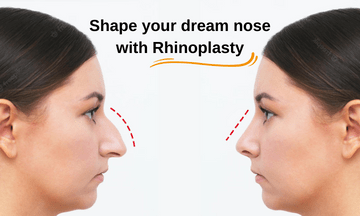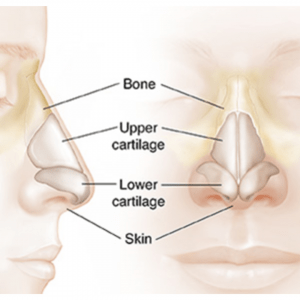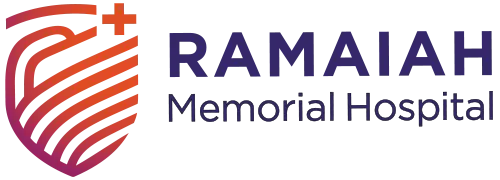Shape your dream nose with Rhinoplasty

What is rhinoplasty?
Rhinoplasty is a surgery that changes the shape of the nose. The motivation for rhinoplasty may be to change the appearance of the nose, improve breathing, or both.
the upper portion of the structure of the nose is bone, and the lower portion is cartilage. Rhinoplasty can change bone, cartilage, skin or all three. The size and relationship of the bone and cartilage determine the size and shape of the nose. Rhinoplasty can be used to reduce the size of the nose, change the shape of the tip or the nasal bridge, narrow the opening of the nostrils, change the angle between the nose and upper lip, correct a birth defect or injury, or help to releive nasal breathing problems.
Each surgery is unique and customized for the specific anatomy and goals of the patient.
Who may benefit from a rhinoplasty?
- Bumps on the nose
- Drooping tip
- Widened bridge
- Nostril size discrepancy
- The disproportionate shape of the nose
- Correction of a birth defect
- Deformity from a previous injury
It is preferred to wait until the nasal bone has finished growing, around the age of 18 years, to make any changes to the nose.

What to expect at your first clinic visit:
The plastic surgeon will speak to you and gain information and insight into what you feel you would like to improve in your nose. We will ask you questions on whether you have headaches, cough, cold, nasal congestion and also will dive deeper into what exactly you hope to see after surgery. Then, we schedule the surgery on a day that is convenient for you.
What are the risks for a rhinoplasty?
As with any major surgery, rhinoplasty carries risks such as :
- Adverse reaction to anaesthesia
- Bleeding
- Infection
Other possible risks specific to rhinoplasty include:
- Difficulty breathing through your nose
- The possibility of an uneven-looking nose
- Pain , discoloration, swelling that persists
- Scarring
- Need for additional surgery
What are the preoperative procedures?
- Routine blood and urine test
- Cardiac work up
What to expect the day before the surgery?
You will get admitted the evening before the surgery. We ask that you take a head bath in the evening. Your surgeon will meet you and take some preoperative photos. We will tell you to not eat or drink after dinner so that your post-anesthesia time is well tolerated. We will remind you that after the surgery, you will have a pack in the nose and will have to breathe through your mouth immediately after the surgery.
What to expect on the big day?
You will take a bath in the morning. We ask that you use no face oils or makeup and that you keep your hair tied up in a knot at the top of your head. Remember, no morning coffee or water today. You will then be taken to the operating room an hour before the procedure and we will meet you there.
What will happen during the surgery?
General anesthesia: you will receive the drug by inhaling it or through an iv line in your hand. General anesthesia affects your entire body and causes you to be unconscious during the surgery. You will need a breathing tube, which will be removed at the end of the surgery.
Rhinoplasty may be done inside your nose or through a small external cut at the base of your nose between your nostrils. Your surgeon will readjust the bone and cartilage underneath your skin. The surgeon can change the shape of your nasal bones and cartilage in several ways. For small changes, the surgeon may use cartilage from deeper inside your nose or from the back of your ear. For larger changes, the surgeon can use cartilage from your rib or implants. After these changes are made, the surgeon places the nose’s skin and tissue back and stitches the incision in your nose.
After the surgery, you will be in a recovery room where the staff monitors your return to wakefulness.
What can I expect after my surgery is done?
After the surgery, you need to rest in bed with your head propped up. Your nose may be congested from the nasal pack placed, so you will have to remember to breathe through the mouth. One of the most important things is to keep ice packs close and continuously place them over the cheeks to reduce any bruising or swelling. The next morning, we will slowly wet the pack with a local anesthetic and gently remove the pack, followed by steam inhalation and nasal drops. You will have the splint still over your nose when you go home.
What care should I take at home?
- Avoid strenuous activities such as the gym or running
- Do not wet the face and hair, a head bath can be done in spa style with the hair in a bowl behind you
- Care for the nasal dressing by keeping it dry and secure. If for any reason, the nasal dressing comes loose, please get in touch with your surgeon.
- Multivitamin tablets should be taken daily to help with the healing process
- You will continue steam inhalations and nasal drops
- You will take a five-day course of oral antibiotics as well
- After one week, you will visit the surgeon for suture removal and inspection.
When can I see the final result?:
You will see a change once the nasal dressing is removed. However, it will take a period of 6 months to one year to fully visualize the result due to swelling.
At Ramaiah Memorial Hospital we care for you like our own.
Hod & consultant plastic surgeon


